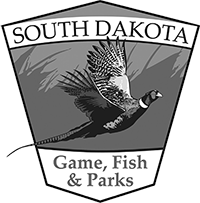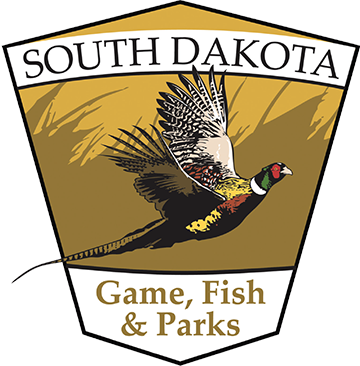Boating Safety Reminders
Top 10 Things to Remember when Boating in South Dakota:
- Complete propoer boat registration and numbering before heading out onto the water.
No one may operate or give permission to operate a non-motorized boat over 12 feet in length or a motorboat of any length on South Dakota waters unless a valid registration decal is displayed on each side of the bow of the boat. All motorboats also must have proper numbering displayed on each side of the bow of the boat. Non-motorized boats over 18 feet in length must also display proper numbering and registration decals on each side of the bow of the boat.
- Ensure all required safety equipment are on board and in proper working order.
Safety equipment includes; lifejackets or personal flotation devices, throwable device, fire extinguishers, navigation lights, whistle or sounding devices.
- Wear your life jacket. All boats/vessels, regardless of size, need to have a properly sized lifejacket for every person on board. Boats and vessels include anything used outside of a designated swimming area to keep a person afloat. These other vessels may include, but are not limited to paddleboards, kayaks, canoes or inflatable rafts.
- Do not overload your boat. Always check the capacity plate on a vessel. This plate is usually found near the operator’s position or on the vessel’s transom. It indicates the maximum weight capacity, maximum number of people the vessel can carry safely, and maximum horsepower. (On vessels under 20 feet in length without a capacity plate, you can use the following rule of thumb to calculate the number of persons that a vessel can carry safely in good weather conditions.
Number of people = vessel length (ft) X vessel width (ft) / 15.)
- Operate your boat in a safe and careful manner. South Dakota law prohibits careless and reckless boat operation. Some common examples of these seen in South Dakota include; allowing occupants in a boat to ride in a manner or locations (bow/transom) that jeopardize their safety when the boat is underway; operating at unreasonable speeds near beaches, fishing boats, docks; operating in such a way that creates an undue hazard to other boats or swimmers.
- Never boat under the influence (BUI). Alcohol is the leading contributing factor in fatal boating accidents. South Dakota law prohibits anyone from boating under the influence of alcohol or drugs. The state blood alcohol content legal limit for operating a vessel under the influence is .08. Please have a designated driver.
- Know your navigation rules. If you are operating a boat or personal watercraft on one of our water resources, it is your responsibility to know the navigation rules and to take actions necessary to avoid collisions. When boating at night, be aware of lights from other vessels on the water.
There are four common lights for navigation:
1. Sidelights are red and green lights visible to an oncoming boat from the side or straight ahead.
2. All around white light (most common in South Dakota) is able to be seen from any direction.
3. Stern light is white light that can be seen from behind the boat.
4. Masthead light is a forward-shining white light located on the mast of a sailboat and required on all powerboats. (The all-around white light is commonly used in leu of the masthead and the stern light).
- Personal Watercrafts or PWC safety is important. Operators and occupants on a PWC must wear a USCG-approved PFD or lifejacket (inflatable PFD’s are not approved for PWCs).
Did you know that most PWCs do not allow “off throttle” steering? To steer a PWC, the engine must be running and you must apply the throttle. If your PWC is at idle or the engine is off, turning the steering column will not result in a change of course. Some new PWC’s do allow for off-throttle steering. Most PWCs also have an emergency ignition safety switch with a lanyard attached to it. It is illegal to operate your PWC without properly attaching the lanyard between the switch and yourself in South Dakota.
- Prevent the spread of aquatic invasive species. Pull your drain plugs, live wells and bait wells to prevent the spread of aquatic invasive species. Boat drain plugs must be opened and removed except when on the water, launching or loading or while in the boat ramp parking area.
- Take a boating safety course. Although a boating safety course is not required to operate a boat in South Dakota, it is highly recommend that you complete a NASBLA/USCG approved course. Below are the course options for South Dakota.
Boat Ed South Dakota Online Course
Boat US Foundation South Dakota Online Course
Boater Exam South Dakota Online Course

